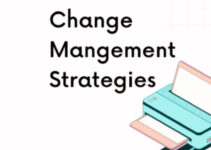Leavitt’s Diamond change management model comprises four main elements of organizational change; structure, task, technology, and people. The four main elements of the organizational change model rely on and are connected with one another. However, Leavitt puts all four elements in the square-shaped diagram to develop a connection among all these elements. Today, we’ll discuss Leavitt’s Diamond change management model; the 4 elements and components of the model; benefits and challenges of Leavitt’s Diamond change model.
Professor Harold J. Leavitt proposed and developed Leavitt’s Diamond change framework and mode in 1960. Soon, he recognized the significance of four main elements of the mode; people, task, structure, and technology. However, he realized that the four elements of the model impact one another in order to develop and maintain a balance among them.
Elements of Leavitt’s Diamond Change Management Model
Let’s discuss the four main elements of Leavitt’s Diamond change management model; they’re as follows;
Structure
The structure sets up the infrastructure ground, base, and foundation of the company. It comprises employees, workforce, organizational hierarchy, chain of command, communication channels and styles at multiple levels of management, and the connection with one another. However, organizational structure plays a key role in the change project, and it should be adjusted relevant to the needs and requirements of the change.
I-Relation between Structure and People
Organizational structural changes would impact the workers, employees, and staff at different levels of management. It impacts their productivity and growth either positively or negatively. For instance, if the company recruits highly tech-oriented employees; it reduces the total number of workers and employees with limited supervision.
II-Relation between Structure and Task
The organizational structural changes would impact the tasks, roles, and routine activities of the employees and workers. For instance, if the company develops a special department to improve the performance of employees, then it requires them to perform different sets of tasks for the new structure.
III-Relation between Structure and Technology
Technological changes significantly impact the company’s structure. For instance, it would automate the processes and procedures and reduce the total number of employees. The structural changes make them move and shift the technology.
Task
The task comprises various activities and processes that employee perform during their working hours. They outline the organizational goals and objectives. However, it analyzes the roles and responsibilities of various employees and the organizational goals.
I-Relation between Task and People
The change in tasks and roles would change the employees and workers. If the company is launching new roles, tasks, and activities, then it would impact the existing and current employees and workers. Experienced employees and workers would perform the new tasks and activities.
II-Relation between Task and Structure
When the company sets up a new department and organizational unit, then it changes the roles and tasks of employees with a new hierarchy. The methods, processes, and procedures would impact the organizational structure.
III-Relation between Task and Technology
The technological changes would alter the tasks, activities, and processes of the employees. It compels the organization to adapt to the new technology by implementing new methods of doing things.
People
Employees and people are the backbone and assets of the companies; they heavily rely on them to reach their goals and objectives. They have the skill, knowledge, expertise, and license to efficiently perform their role and tasks.
I-Relation between People and Structure
When the company changes the organizational structure, hierarchy, and chain of command, it directly impacts employees. They would receive new roles and responsibilities for the new organizational structure.
II-Relation between People and Task
When the company changes the tasks and activities of employees, they need to find new methods of doing things. Employees and workers would adjust to the new tasks and activities with proper training and activities.
III-Relation between People and Technology
While launching new technological tools, equipment, and processes; employees would require new methods and processes to perform their roles. Often, the new technology would require the company to hire and recruit new employees and staff to perform new tasks and activities.
Technology
Technological changes help employees and workers to perform better in their new roles. It could be in the form of new software, systems, machines, and cellular systems that perform better and speedily.
I-Relation between Technology and People
Technological changes should be relevant to the employees and workers of the organization. This is because they need specific skills and expertise to perform their tasks and activities at the workplace.
II-Relation between Technology and Task
Implementing the new technology would change the tasks and activities of employees. For instance, if a company is planning to change the registration process and replace it with a new one, the most efficient and effective solution is to replace it with an online registration process.
III-Relation between Technology and Structure
Tech solution directly impacts and changes the organizational structure. For instance, if a company plans to change the huge departmental system to achieve cost efficiency and productivity; tech automation is a great solution for them.
Benefits of Leavitt’s Diamond Change Model
Some of the main advantages and benefits of Leavitt’s Diamond change model are as follows;
- Changes on one side would require the company to implement changes on the other side to maximize efficiency and improve productivity.
- A practical framework helps the company to analyze various areas of the company and implement planned change initiatives.
- The flexibility of the model helps companies to adapt to changes relevant to the needs and requirements of the company.
- Recognizes the significance of people in various areas of the change and puts emphasis on the beliefs, behavior, and attitudes of people
- Improves the outcome, growth, and productivity of the organizational changes
Challenges of Leavitt’s Diamond Change Model
Some of the main disadvantages and challenges of Leavitt’s Diamond change model are as follows;
- Four different elements make it difficult for companies to implement the changes
- Offers limited guidelines on how to prioritize various types of changes when companies have limited resources
- No protocol and process on how to implement the changes in real life
- Limited focus on the external factors impacting the organizational changes
- Companies can’t always remain in the state of equilibrium where everything is there at the optimum level
Conclusion: Leavitt’s Diamond Change Management Model |Leavitt’s Diamond Change Model
After an in-depth study of Leavitt’s diamond change management model; we have realized that Leavitt’s mode is highly significant for organizational changes. If you are learning about Leavitt’s diamond change mode; then you should keep in mind the abovementioned four main elements, benefits, and challenges.
Ahsan is an accomplished researcher and has a deep insight in worldly life affairs. He goes Live 3 days a week on various social media platforms. Other than research writing, he’s a very interesting person.


